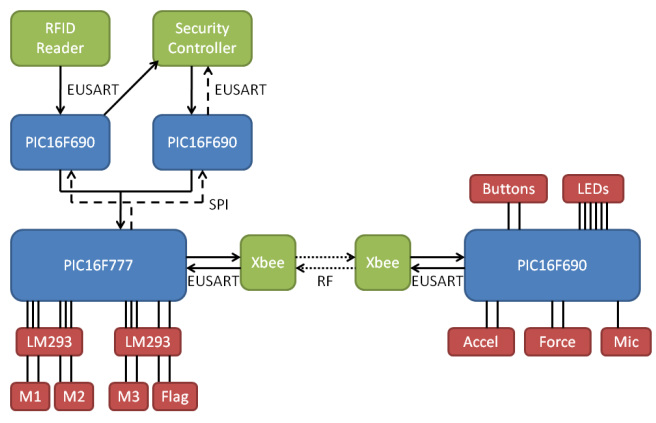We've arrived at a new set of inputs and controls for our CVC. Since we've mostly ruled out a propulsion mode that we were secretly considering (more on that at a later date), we don't have much of a use for the balancing plank that we presented at design review.
Our new control method consists of a large (13" diameter) plastic sphere that the user holds. The user will tilt the sphere forwards and backwards to control speed and side to side to control turning. The user will squeeze the sphere harder to amply the boat's speed, or he will hold the sphere gently for precise movements. The user will calibrate the accelerometer by shaking the device to initialize a calibration sequence. The sensors we will use are:
- 2-Axis ADXL203 (pdf) accelerometer -- this senses the forward/backwards and side-to-side tilt of the sphere for driving the boat.
- Force Sensing Resistor (2128260 at Jameco) -- Two of these, one on each the left and right side of the sphere, will detect that the user is holding the sphere. They will also measure how hard the user is squeezing the sphere for amplifying the boat's speed.
- Optical Shake Switch -- Inspired by tilt switches, we will make our own "shake switch" that will consist of an opaque weight inside a tube. When shaken, the weight will travel to the top of the tube and interrupt an IR LED/Sensor pair. This action will initialize calibration of the accelerometer.
